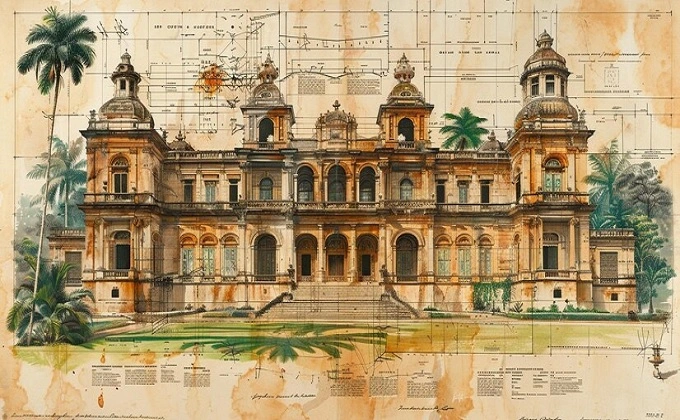
The period from 1714 to 1830 was a significant era in design and construction, characterized by a specific architectural style between 1714 and 1830 crossword. During the Georgian and Regency periods in Britain, some of the most famous buildings in history were built. They also set standards for symmetry, proportion, and classical order which continue to impact architecture today. Even after centuries, the graceful columns and elaborate decorations from this era still influence our perceptions of beauty and sophistication in architectural design. This article will lead readers on a crossword adventure to enhance our comprehension of this essential building design. Deciphering hints about important words, important people, and instances will lead to a deeper understanding of how the style was introduced, its distinctive characteristics, and lasting influence.
The Rise of the Architectural Style Between 1714 and 1830 Crossword
The architecture of this period arose in the context of the Enlightenment, which emphasized reason, science, and classical ideals. Influential treatises like Andrea Palladio’s Four Books of Architecture highlighted classical forms and mathematical ratios. Patrons like the aristocracy embraced this cultured classicism. The Georgian style emerged in Britain under the Hanoverian kings. Distinct subtypes also arose, like Palladianism in country houses and the Regency style. Architects like Inigo Jones, Christopher Wren, John Wood, Robert Adam, and John Nash put their stamps on the era’s buildings. Examples like St Paul’s Cathedral, the Royal Crescent, Monticello, and the White House displayed the style’s grandeur.
The Key Features of the Architectural Style Between 1714 and 1830
The architecture of this period was defined by order, symmetry, proportion, and extensive use of classical details. Façades were strictly symmetrical with an orderly arrangement of windows and columns. Pediments, pilasters, and cornices referenced classical Greek and Roman forms. Interiors featured ornate moldings and decorative motifs like urns and garlands. Elegant curving colonnades were signature of the style’s later Regency phase. Buildings were crafted from stone or brick and often painted white. Orderly landscaped gardens complemented the structured designs.
The Influence of the Architectural Style on Modern Architecture
The order and refinement of this architectural style has inspired neoclassical buildings up to today. Grand civic structures like the U.S. Capitol, Lincoln Memorial, and Supreme Court evoke the democratic ideals of ancient Greece and Rome. Columns and symmetry still lend public buildings gravitas. Suburban American houses feature classical detailing like dentils and pilasters. The White House remains the enduring symbol of American democracy. Beyond specific buildings, this architecture gave us principles of form, order, and harmony that continue to shape the built environment.
A Crossword Journey Through the Architectural Style Between 1714 and 1830
Here are some crossword clues to unravel this architectural style:
- Symmetrical facade with columns – P O T C O
- Triangular section atop a facade – P D M _ N T
- Mini-columns attached to walls – P L S E S
- Ornate curved shape framing a door or window – P D M _ N T
- Decorative garland design – G R A _ D
- Palladio’s guidebook for classical design – T E T S
- Columned walkway or porch – C O L O N N A D E
- Geometric ratios for harmony – R A T _ O S
- Leading 18th century British architect – C H R S O P E R W R N
- Grand home designed by Inigo Jones – C H S I C K
Solving these crossword clues and more will help deepen our understanding of this foundational and still-relevant architectural style.
Conclusion
The Enduring Legacy of the Architectural Style Between 1714 and 1830 Crossword
The architectural style between 1714 and 1830 crossword left an enduring imprint on the built environment. Through its embrace of classical order, reason, and harmony, this period produced some of history’s most iconic buildings and still shapes our ideas of architectural beauty today. Though centuries have passed, the balanced facades, elegant columns, and ornate details of this era continue to inspire. This crossword journey has guided us through the style’s emergence, key features, and lasting impact. Unraveling related clues has unlocked a richer appreciation of this foundational architecture.
